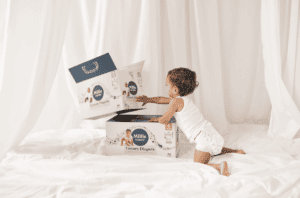Parenting and learning how to discipline your stubborn child can be tricky. They might refuse to comply with your standard and well-worn parenting strategies. They can seemingly take things too far. You need them to pick up their toys? Cue a knowing look in their eye, and the toys remain on the floor. Or more toys get strewn around. You ask them to sit quietly? The volume increases or a possible tantrum gets added to the mix.
Being stubborn doesn’t mean they are bad. A stubborn or hard-headed child is often just very independent and feels very strongly about doing things their way, on their own terms, and on their own time. You can benefit from learning how to recognize the characteristics of stubbornness and how to discipline your stubborn child.
What are the Characteristics of a Stubborn Child?
- They have a strong need to be heard and acknowledged
- They are independent
- Committed to what they are doing or fixated on achieving a particular outcome
- You might see more tantrums; they have big feelings when things don’t go the way they intend
- They display strong leadership skills, which might come across as bossy
- They feel strongly about doing things at their pace
What Does Effective Discipline Look Like?
Effective discipline for any child is the foundational structure that helps a child fit into the world more easily and happily.3 It’s about teaching children about the world and guiding them to be effective in how they interact with others. Effective discipline should be consistent, fair, and developmentally appropriate for the child and eventually lead to self-discipline.3
Strategies to Discipline a Stubborn Child
Let’s explore some strategies to help you harness and redirect a stubborn child’s strength of will in a more helpful direction.
You Can’t Control Everything
Remember that you can’t control all their behaviors. Too much control and not enough choice (or perception of choice) may result in pretty strong reactions from your little person. You can, however, control what they learn and harness their stubbornness. When they complete tasks, show significant efforts to be resilient (trying and persisting), or when they show behaviors you would like them to repeat, you can praise them. Praising them means naming the behavior they demonstrated and letting them know why it was positive or helpful. This will help them learn and understand how to point their natural skills in the right direction.
Model Appropriate Behaviors
Are you the kind of person who needs the last word? Do you struggle to say you’re sorry? Or be flexible? Just be mindful that if you ask certain things of your kids, you need to demonstrate and show them what you expect to see. We are our children’s first teachers, and they will replicate how they see us interact with the world. It’s important to ensure that what you ask of your child is aligned with the behaviors you show them.
Pick a Method to Discipline Your Child
Pick your discipline method. Authoritative parenting—which can be very directive or parent-influenced—might not be the best option for your little person. This is because discipline is likely to end up as a battle of wills. But gentler parenting that considers their needs and opinions can be more helpful. I’m not saying you must do everything your child says or have no boundaries.
Instead, the focus shifts toward more reciprocity and mutual respect. Instead, you harness their strengths, offer them safer and developmentally appropriate choices, and encourage a partnership between you and your child. This may help you avoid being on opposing sides.
Discipline for Early Toddlers
Discipline might be most effective for young toddlers by removing them from the negative situation. You can give them a short explanation of why their behavior is wrong and then put them into an alternative situation.3
Discipline for Older Toddlers
For children who are older toddlers, it’s essential to set limits and have routines for them. When disciplining them, you can explain what they did wrong. You can also reassure them that they’re not a bad child and redirect them to another positive activity.3
Discipline for Preschoolers
At the preschool or kindergarten age, using a time-out and minor consequences for discipline is acceptable sometimes when a child loses control of their temper.3
Discipline for School-Age Children
For older children who aren’t yet teenagers, you can withdraw or delay their privileges of watching TV or playing video games.3 These can often be effective methods of discipline, like using a time-out.
Pick Your Battles
This means that when you say “no,” your child gets that you mean no! After saying no, be consistent with your boundaries. Otherwise, your child will know you don’t mean what you say or respect the limits you put in place. Allow them as much independence as is appropriate for their age and within your family so they don’t have to fight to feel in control.
Having a stubborn child isn’t all doom and gloom. Stubbornness will serve them in their future; your child will be tenacious and persistent. This will help them be resilient and keep trying when things get tough for them.1, 2 However, as a parent, all this “tenacity” can feel like a never-ending battle. We understand. But with these tips, things can go more smoothly.






























